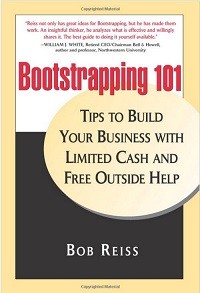Breaking Down the Barriers to Entrepreneurship
Starting a business with $5,000 may seem daunting, but it’s a viable amount to launch a successful venture. Many aspiring entrepreneurs believe that a significant amount of capital is required to start a business, but this misconception can be a major barrier to entry. In reality, careful planning, creativity, and hard work can overcome initial hurdles and set a business up for success.
One of the primary advantages of starting a business with a limited budget is that it forces entrepreneurs to be resourceful and innovative. Without the luxury of a large budget, entrepreneurs must think creatively to find solutions to problems and identify opportunities for growth. This approach can lead to the development of unique business models and strategies that might not have been possible with a larger budget.
Moreover, starting a business with $5,000 can help entrepreneurs avoid the pitfalls of over-investing in a business idea that may not be viable. By starting small and testing the waters, entrepreneurs can validate their business idea and make adjustments as needed before scaling up. This approach can help minimize financial risk and ensure that the business is built on a solid foundation.
Additionally, starting a business with a limited budget can foster a sense of community and collaboration. Entrepreneurs may need to seek out mentors, partners, or collaborators to help them navigate the challenges of starting a business. This can lead to the development of valuable relationships and a support network that can be essential for long-term success.
Ultimately, starting a business with $5,000 requires a willingness to take calculated risks and be adaptable. By embracing the challenges and opportunities of starting a business on a limited budget, entrepreneurs can develop the skills and resilience needed to succeed in the long term. Whether it’s through bootstrapping, crowdfunding, or seeking out alternative funding sources, there are many ways to start a business with $5,000 and achieve success.
Identifying Lucrative Business Opportunities on a Budget
Starting a business with $5,000 requires careful consideration of various business ideas that can be launched with a limited budget. Fortunately, there are several opportunities that can be explored, including freelancing, online coaching, and selling products through e-commerce platforms.
Freelancing is a popular option for entrepreneurs who want to monetize their skills without a significant upfront investment. Platforms like Upwork, Fiverr, and Freelancer offer a range of opportunities for freelancers to find clients and projects. With $5,000, entrepreneurs can invest in marketing their services, building a professional website, and developing a portfolio of work.
Online coaching is another lucrative business opportunity that can be started with a limited budget. With the rise of online learning, entrepreneurs can create and sell online courses, offer one-on-one coaching services, or create a membership site. Platforms like Teachable, Thinkific, and Kajabi make it easy to create and sell online courses, while Zoom and Skype enable entrepreneurs to offer coaching services remotely.
Selling products through e-commerce platforms is also a viable option for entrepreneurs who want to start a business with $5,000. Platforms like Amazon, Etsy, and eBay offer a range of opportunities for entrepreneurs to sell products, from handmade goods to dropshipped products. With $5,000, entrepreneurs can invest in inventory, marketing, and shipping, and start selling products quickly.
Other business ideas that can be started with $5,000 include affiliate marketing, selling stock photos, and creating and selling an online app or game. The key to success is to identify a business idea that aligns with your skills and interests, and to be willing to put in the time and effort required to build a successful business.
Successful entrepreneurs who have started businesses with similar budgets include Chris Guillebeau, who started a successful online business with just $100, and Michelle Schroeder-Gardner, who started a successful affiliate marketing business with just $1,000. These examples demonstrate that it is possible to start a successful business with a limited budget, and that the key to success is to be creative, resourceful, and willing to take calculated risks.
How to Create a Solid Business Plan on a Shoestring Budget
Starting a business with $5,000 requires a solid business plan that outlines goals, strategies, and financial projections. A well-crafted business plan is essential for securing funding, guiding decision-making, and measuring progress. Fortunately, creating a comprehensive business plan doesn’t have to break the bank.
The first step in creating a business plan is to conduct market research. This involves identifying target customers, analyzing competitors, and assessing market trends. Free or low-cost tools like Google Trends, Keyword Planner, and social media listening can provide valuable insights into market dynamics.
Next, entrepreneurs should conduct a competitive analysis to identify gaps in the market and opportunities for differentiation. This involves researching competitors’ strengths, weaknesses, and strategies, as well as analyzing their pricing, marketing, and sales tactics.
Financial projections are also a critical component of a business plan. This involves estimating revenue, expenses, and profits over a specific period. Free or low-cost tools like Excel, Google Sheets, or online business plan templates can help entrepreneurs create financial projections without overspending.
Setting realistic goals and milestones is also essential for a successful business plan. This involves identifying specific objectives, such as revenue targets, customer acquisition goals, or product development milestones. Regularly reviewing and updating goals and milestones can help entrepreneurs stay on track and make adjustments as needed.
Finally, entrepreneurs should prioritize their business plan and focus on the most critical elements. This involves identifying the most important goals, strategies, and financial projections, and allocating resources accordingly. By prioritizing their business plan, entrepreneurs can ensure that they are using their limited budget effectively and efficiently.
Examples of successful business plans on a shoestring budget include the Lean Startup methodology, which emphasizes rapid experimentation and iteration, and the Business Model Canvas, which provides a visual framework for designing and innovating business models. These approaches can help entrepreneurs create a solid business plan without breaking the bank.
By following these steps and using free or low-cost tools and resources, entrepreneurs can create a comprehensive business plan that guides their decision-making and helps them achieve their goals. Whether starting a business with $5,000 or a larger budget, a solid business plan is essential for success.
Bootstrapping 101: Managing Finances and Minimizing Costs
Starting a business with $5,000 requires careful management of finances and minimizing costs. Bootstrapping is a great way to achieve this, as it involves using personal savings or revenue from early customers to fund the business. By bootstrapping, entrepreneurs can maintain control and ownership of their business, while also fostering creativity and resourcefulness.
One of the most important strategies for managing finances effectively is to prioritize expenses. This involves identifying essential expenses, such as rent, utilities, and equipment, and cutting back on non-essential expenses, such as travel or entertainment. By prioritizing expenses, entrepreneurs can ensure that they are using their limited budget efficiently and effectively.
Reducing overhead costs is also crucial for bootstrapping. This can involve finding free or low-cost alternatives for office space, equipment, and software. For example, entrepreneurs can use co-working spaces or shared offices to reduce rent costs, or use free or low-cost software alternatives to expensive proprietary software.
Leveraging free or low-cost marketing channels is another effective way to minimize costs. This can involve using social media, content marketing, or email marketing to reach customers and promote products or services. By using these channels, entrepreneurs can reach a large audience without breaking the bank.
Other strategies for bootstrapping include outsourcing tasks, hiring freelancers or contractors, and using online tools and resources to streamline operations. By outsourcing tasks, entrepreneurs can free up time and focus on high-priority tasks, while also reducing labor costs. Hiring freelancers or contractors can also help entrepreneurs access specialized skills and expertise without having to hire full-time employees.
Using online tools and resources can also help entrepreneurs streamline operations and reduce costs. For example, entrepreneurs can use project management tools like Trello or Asana to manage tasks and projects, or use accounting software like QuickBooks or Xero to manage finances.
Examples of successful bootstrapped businesses include Airbnb, which was started with just $1,000, and Dropbox, which was started with just $15,000. These businesses demonstrate that it is possible to start and grow a successful business with limited funding, as long as entrepreneurs are willing to be creative and resourceful.
By following these strategies and using free or low-cost tools and resources, entrepreneurs can successfully bootstrap their business and achieve their goals. Whether starting a business with $5,000 or a larger budget, bootstrapping is a great way to maintain control and ownership, while also fostering creativity and resourcefulness.
Building a Strong Online Presence without Breaking the Bank
Starting a business with $5,000 requires a strong online presence to reach customers and promote products or services. However, building a professional website and leveraging social media can be expensive. Fortunately, there are many free or low-cost tools and resources available to help entrepreneurs build a strong online presence without breaking the bank.
Creating a professional website is essential for any business. However, hiring a web designer or developer can be expensive. Instead, entrepreneurs can use website builders like Wix, Squarespace, or Weebly to create a professional-looking website without any coding knowledge. These platforms offer a range of templates and drag-and-drop tools to make it easy to create a website.
Leveraging social media is also crucial for building a strong online presence. However, managing multiple social media accounts can be time-consuming and expensive. Instead, entrepreneurs can use social media management tools like Hootsuite or Buffer to schedule posts and track engagement. These tools offer a range of features, including analytics and content suggestions, to help entrepreneurs get the most out of their social media marketing efforts.
Developing a content marketing strategy is also essential for building a strong online presence. However, creating high-quality content can be expensive. Instead, entrepreneurs can use content creation tools like Canva or Adobe Creative Cloud to create professional-looking graphics and videos. These tools offer a range of templates and design elements to make it easy to create high-quality content.
Other strategies for building a strong online presence include optimizing website content for search engines, using email marketing to reach customers, and leveraging customer reviews and testimonials. By using these strategies, entrepreneurs can build a strong online presence and reach customers without breaking the bank.
Examples of successful online businesses that have been built on a budget include Dollar Shave Club, which was started with just $1,000, and Warby Parker, which was started with just $120,000. These businesses demonstrate that it is possible to build a successful online business with limited funding, as long as entrepreneurs are willing to be creative and resourceful.
By using free or low-cost tools and resources, entrepreneurs can build a strong online presence and reach customers without breaking the bank. Whether starting a business with $5,000 or a larger budget, building a strong online presence is essential for success.
Navigating the World of E-commerce and Online Marketplaces
Starting a business with $5,000 can be a great way to get started with e-commerce and online marketplaces. Platforms like Amazon, Etsy, and eBay offer a range of opportunities for entrepreneurs to sell products and reach a large audience. However, navigating these platforms can be challenging, especially for those who are new to e-commerce.
One of the key challenges of selling on e-commerce platforms is optimizing product listings. This involves creating high-quality product descriptions, images, and videos that showcase the product and its features. Entrepreneurs can use tools like Amazon’s Seller Central or Etsy’s Seller Handbook to help optimize their product listings and improve their visibility on the platform.
Managing inventory is also crucial for e-commerce businesses. This involves tracking stock levels, managing orders, and shipping products to customers. Entrepreneurs can use tools like Inventory Management Software or Shipping Software to help manage their inventory and streamline their operations.
Providing excellent customer service is also essential for e-commerce businesses. This involves responding to customer inquiries, resolving issues, and providing refunds or replacements when necessary. Entrepreneurs can use tools like Customer Service Software or Helpdesk Software to help manage their customer service and improve their customer satisfaction.
Other strategies for navigating e-commerce platforms include using social media to promote products, leveraging customer reviews and testimonials, and offering competitive pricing and shipping options. By using these strategies, entrepreneurs can increase their visibility, drive sales, and build a successful e-commerce business.
Examples of successful e-commerce businesses that have been built on a budget include Zappos, which was started with just $1,000, and Warby Parker, which was started with just $120,000. These businesses demonstrate that it is possible to build a successful e-commerce business with limited funding, as long as entrepreneurs are willing to be creative and resourceful.
By following these tips and using the right tools and resources, entrepreneurs can navigate the world of e-commerce and online marketplaces and build a successful business. Whether starting a business with $5,000 or a larger budget, e-commerce offers a range of opportunities for entrepreneurs to reach a large audience and drive sales.
From Side Hustle to Full-Time Business: Scaling Your Venture
Starting a business with $5,000 can be a great way to turn a side hustle into a full-time venture. However, scaling a business requires careful planning, strategic decision-making, and a willingness to adapt to changing circumstances. In this article, we will explore strategies for growing a business from a side hustle to a full-time venture.
One of the key challenges of scaling a business is outsourcing tasks and hiring freelancers or employees. This involves identifying areas of the business that can be delegated to others, such as bookkeeping, marketing, or customer service. By outsourcing tasks, entrepreneurs can free up time and focus on high-priority tasks, such as product development, sales, and customer acquisition.
Another strategy for scaling a business is expanding product or service offerings. This involves identifying new markets, developing new products or services, and creating new revenue streams. By expanding product or service offerings, entrepreneurs can increase revenue, improve customer satisfaction, and stay ahead of the competition.
Other strategies for scaling a business include leveraging technology, such as automation tools and software, to streamline operations and improve efficiency. Entrepreneurs can also use data analytics and market research to inform business decisions and identify new opportunities for growth.
Examples of successful businesses that have scaled from a side hustle to a full-time venture include Airbnb, which was started as a side hustle and has since grown into a global company, and Warby Parker, which was started as a side hustle and has since become a leading eyewear brand.
By following these strategies and being willing to adapt to changing circumstances, entrepreneurs can successfully scale their business from a side hustle to a full-time venture. Whether starting a business with $5,000 or a larger budget, scaling a business requires careful planning, strategic decision-making, and a willingness to take calculated risks.
Additionally, entrepreneurs can use tools like project management software, customer relationship management (CRM) software, and accounting software to help manage and scale their business. These tools can help entrepreneurs streamline operations, improve efficiency, and make informed business decisions.
Overcoming Common Challenges and Staying Motivated
Starting a business with $5,000 can be a challenging and overwhelming experience, especially for those who are new to entrepreneurship. However, with the right mindset and strategies, entrepreneurs can overcome common challenges and stay motivated to achieve their goals.
One of the most common challenges faced by entrepreneurs is self-doubt. This can manifest as fear of failure, fear of success, or fear of the unknown. To overcome self-doubt, entrepreneurs can focus on their strengths and accomplishments, and remind themselves of their reasons for starting a business in the first place.
Another common challenge is procrastination. This can be caused by fear, lack of motivation, or simply not knowing where to start. To overcome procrastination, entrepreneurs can break down large tasks into smaller, manageable chunks, and create a schedule to stay on track.
Burnout is also a common challenge faced by entrepreneurs. This can be caused by working long hours, taking on too much responsibility, or neglecting self-care. To overcome burnout, entrepreneurs can prioritize self-care, delegate tasks to others, and take regular breaks to rest and recharge.
Staying motivated is also crucial for entrepreneurs. This can be achieved by celebrating small wins, setting realistic goals and milestones, and finding a supportive community of fellow entrepreneurs. By staying motivated and focused, entrepreneurs can overcome common challenges and achieve their goals.
Examples of successful entrepreneurs who have overcome common challenges include Steve Jobs, who was fired from Apple before returning to lead the company to success, and J.K. Rowling, who was a single mother living on welfare before becoming a bestselling author. These entrepreneurs demonstrate that it is possible to overcome challenges and achieve success with determination and hard work.
By following these strategies and staying motivated, entrepreneurs can overcome common challenges and achieve their goals. Whether starting a business with $5,000 or a larger budget, entrepreneurs can build a successful and sustainable business with the right mindset and approach.







